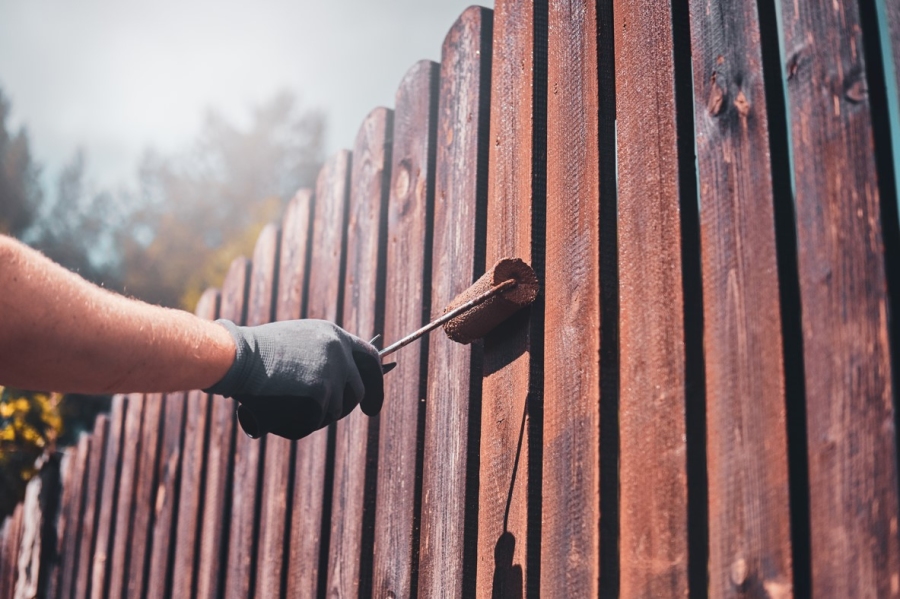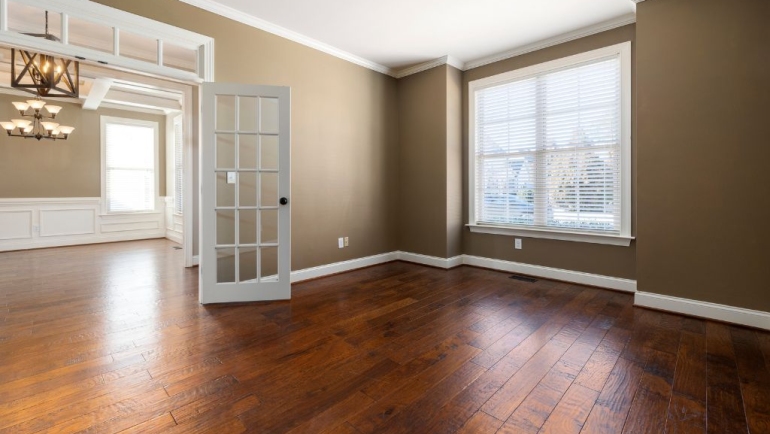5843Views 0Comments

The Difference Between Vinyl and Wooden Fencing
If you’re thinking about building a new fence, the first thing you’ll need to do is determine what type of fencing you want to use. Wood fencing and vinyl fencing are the two most common options. Both types of fencing have their own advantages and drawbacks, which makes it essential that you carefully consider your choice.
Vinyl Usually Costs More Upfront
Vinyl fencing typically costs more per foot than the average wood fence. The biggest reason is the process behind making the fencing. Since wood fences are typically made from 2×6” slabs of wood, there is very little that manufacturers need to do besides milling the wood to size. Vinyl fencing, on the other hand, typically requires creating the material, molding it, and then going through a cooling process. All of which require heavy machinery and multiple workers to review the process. That being said, vinyl isn’t always more expensive than wood, especially if you choose a more expensive type of wood like redwood or teak. These types of wood are more common for individuals that want the bare wood look with minimal upkeep. Still, this isn’t all that common as most people opt for something like cedar or pressure-treated wood. However, if you plan on painting over the wood, then you can typically get away with cheaper wood.
Though the cost of vinyl material is typically more expensive than wood, the installation is usually similar in cost. For example, the holes needed for each post are typically the same size for vinyl and wood fencing. Meaning that the labor and cement costs that go into creating the holes for the posts add up to the same amount of time. Additionally, posts are typically spaced out the same distance, so the same number of posts will be used for either type of fencing. This results in similar costs for installation. However, some companies may charge you by weight to transport the fencing to your home. In which case, vinyl fencing is typically cheaper since it is a lighter product. Additional costs are dependent on the company installing the fencing. For example, some installation companies may charge extra for handling vinyl fencing than they would for wood fencing. This is usually because replacing a piece of wood that was damaged during the installation process is much cheaper and easier than if they had to replace an entire vinyl section due to a tool being misused or something else that may damage the fence.
Vinyl Fencing Requires Less Maintenance and Is More Durable
Although vinyl may cost more upfront, it can still be the cheaper option in the long run. This is because wood fencing requires much more maintenance. Constant exposure to weather and sunlight doesn’t affect vinyl nearly as much as wood. Vinyl fencing requires almost zero maintenance, whereas wood fencing will need to reseal and restain or repaint the fence every few years. You’ll also need to replace your vinyl fence approximately every 10 to 15 years, while most vinyl fences will also last for around 20 to 30 years.
Wood Fences Are Easier to Repair
One advantage of wood fencing is that it is much easier to repair. Although vinyl is generally durable, it can still crack, break or otherwise get damaged. For example, it is more likely to get a crack when a baseball hits it than when a baseball hits a wooden fence. When this happens, you will usually have to replace the entire section of the fence. The reason for this is that the vinyl fencing doesn’t have individual pieces but actually has an entire section made from one section of vinyl. Wood fencing, on the other hand, is fairly quick and easy to repair. In most cases, you can simply replace individual boards if they ever warp, crack or break. That being said, wood fences typically need to be repainted regularly whereas vinyl fences will appear the same year after year. If you want your fence to look sharp and brand new, then the upkeep and repair of wooden fences may result in costing more than getting a vinyl fence. Additional considerations for repair should be considered when a trimmer or weed wacker is used near the fence on a regular basis. Vinyl fences are much more likely to get cracks and brakes when hit with a weed wacker than a wooden fence is. With that in mind, many landscape companies are easy to work with and will take care to avoid the fence when edging your lawn.
Wood Looks More Natural and Is More Versatile
Vinyl fencing comes in a wide variety of colors and styles, and you can even find vinyl fences designed to mimic the look of wood or stone. However, vinyl fencing cannot be painted, which essentially means that you’ll be stuck with whatever style you initially chose. That being said, it can be painted, but the material makes it difficult to stick and thus doesn’t typically look professionally done when painted. Unless you want to replace the fence entirely, your vinyl fencing will always look the same. This isn’t an issue if you choose wood fencing since you can always paint or stain it a different color any time you feel like changing its look.
Both wood and vinyl fencing can be great options. In most cases, choosing between the two will come down to your individual preferences. Specifically, it’s a matter of which style you think looks better and how much you’re willing to pay upfront.


